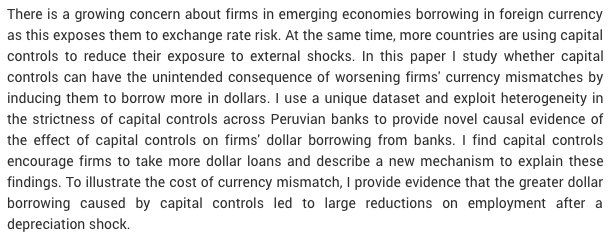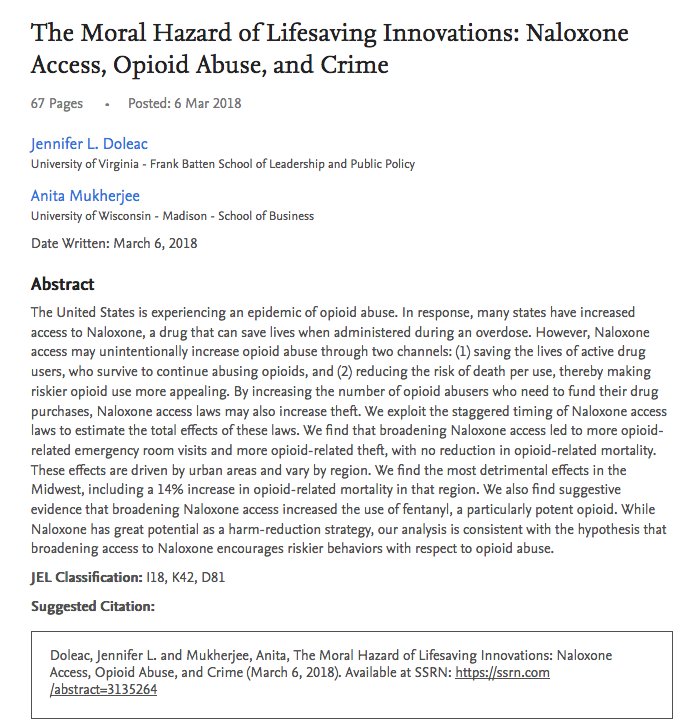"The Moral Hazard of Lifesaving Innovations: Naloxone Access, Opioid Abuse, and Crime"
papers.ssrn.com/sol3/papers.cf…




Most striking, we find that expanding Naloxone access *increased* opioid-related mortality in the Midwest by 14%, and fentanyl-related mortality by 84%.


encourages riskier behaviors with respect to opioid abuse.
brookings.edu/blog/up-front/…












